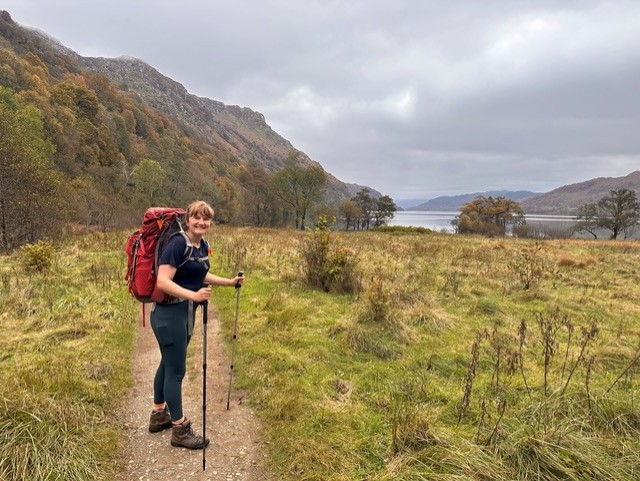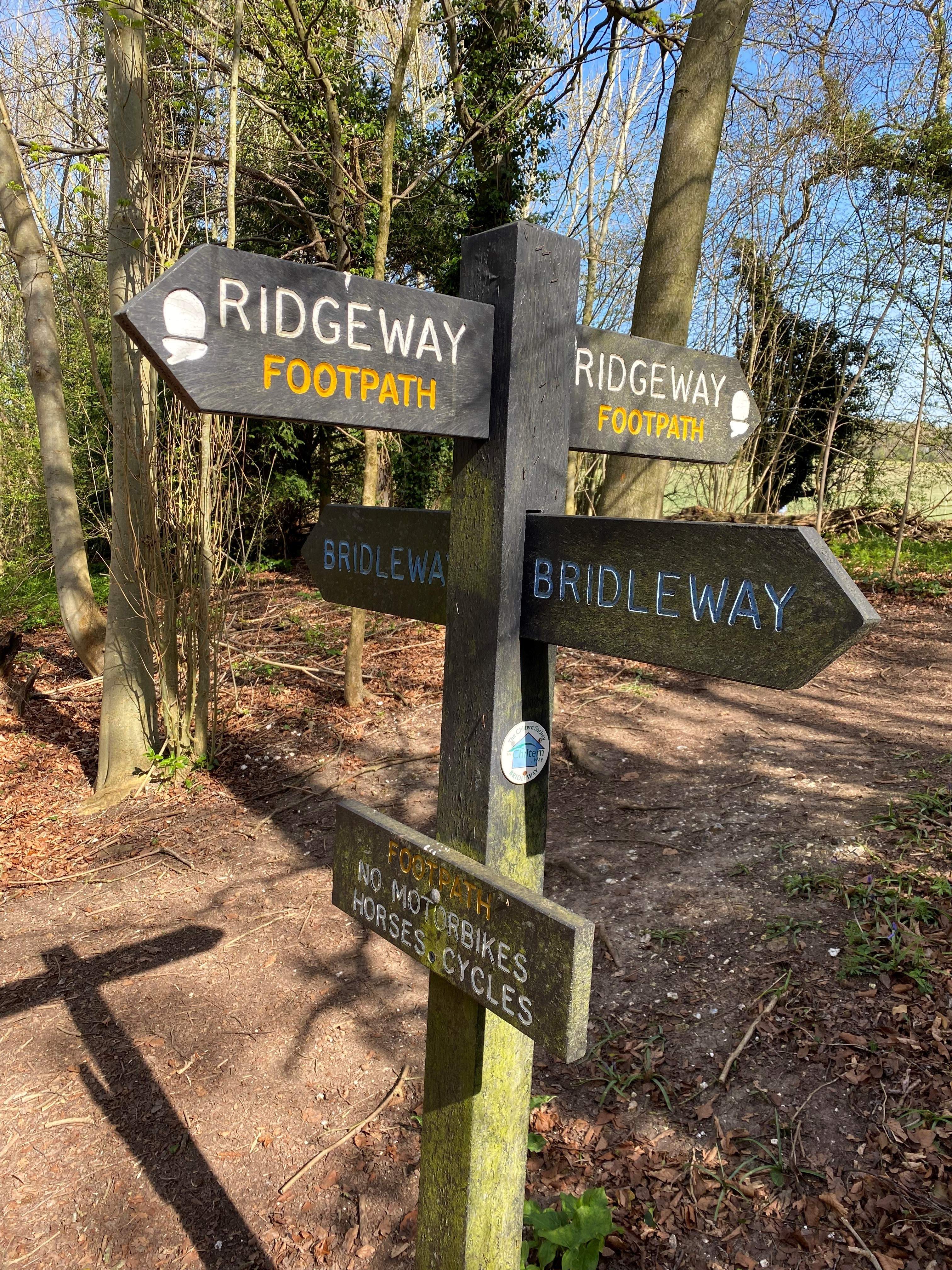On Thursday 6th November, after many months of internal and external consultation, Natural England published their new corporate strategy. This new strategy for the next five years focuses on four key themes; recovering nature, building better places, improving health and wellbeing, and delivering security through nature. National Trails UK was one of 200 organisations that were part of the consultation process. Having seen past draft strategies and provided feedback, I was doubly intrigued to see what made the final cut, and work out what this means for National Trails. To help you understand what the new Natural England Strategy means for you, I’m going to outline what the strategy contains, the key areas for National Trails, as well as a more in-depth look at the strategy.
Why is the strategy important for National Trails?
As the government adviser for the natural environment in England, working across regulation, protection, and access to the natural environment, Natural England has a central role for the nature sector in England. On top of that, Natural England also manages the government funding for National Trails, National Trail standards, provides liaison for the National Trail Partnerships and the National Trails website and social media accounts.
What is in the strategy?
The strategy covers the four strategic outcomes Natural England will be focused on, and how it will work to deliver those outcomes. The four areas are:
1. Recovering nature
2. Building better places
3. Improving health and wellbeing
4. Delivering security through nature
The online version also contains links to a case study and underlying evidence report for each of the sections, so that we can see Natural England’s working.
Any big wins for National Trails?
YES! The importance of the National Trails for our health and well being in delivering the highest quality access to nature is recognised. National Trails have been directly mentioned in ‘Outcome 3’, as exemplars of the high-quality access which Natural England wants to increase. Having National Trails name-checked like this not only shows that the benefits of National Trails for health and wellbeing is understood, it is testament to the years of hard work of National Trail Partnerships in delivering amazing access, and we should celebrate this important win for National Trails. [KC4]
Are there other wins or challenges for National Trails?
WIN: Natural England will be shifting to more strategic, scale-based working. As National Trails are a significant network, and can make the biggest difference when included in work at a strategic level, I take this as a win for us.
WIN: Local Nature Recovery Strategies will be used to direct investment in nature at a local level, which is great for National Trails as NTUK has been largely successful in getting National Trails and the Coastal Margin into Local Nature Recovery Strategies.
WIN AND CHALLENGE: One of the success measures in this strategy is to have more people engaged outdoors and nature within easy reach. This is what our National Trails already offer to so many people and they could be even better if supported properly. However, I think this is also a challenge as the current measurement is not inclusive. As we and others have raised time and again with DEFRA and Natural England, the current ’15 min walk from home’ statistic is based purely on walking routes and fails to take into account routes using access features like drop curbs and textured pavement, which are vital for many, especially those in multi-generational groups and those with mobility needs. Government’s own research has shown that people with reduced mobility are one of the groups underrepresented in nature. If Government want to change that, they have to invest in developing statistical modelling and update the statistics to include features like dropped curbs, textured pavement, safe road crossings etc. Only then will we be able to properly measure how accessible nature is from our homes.
CHALLENGE: the full multi-benefits of National Trails are still not understood, as National Trails have not been included in Outcome 1, Recovering Nature or Outcome 2, Building Better Places.
National Trails play a vital role in recovering nature, which NTUK is continuing to grow the evidence for. We are the connectors for the Protected Landscapes and non-designated areas; roughly half the network runs through National Parks and National Landscapes. Surely, therefore, National Trails should be central to ‘wildlife thriving in protected areas, which are connected to and enriching the wider environment’?
National Trails are also important in building better places, as a way to access nature around developments. There are increasing levels of development along the National Trails, especially in the coastal margin where due to the lack of proper protection for the National Trails, developments are removing the access the King Charles III England Coast Path should be providing. In addition, as National Trails are not properly defined in the National Planning Policy Framework, opportunities to work with the network are missed.
Both of these points are central to the National Trails Manifesto for England, which we continue to work to deliver.
CHALLENGE: This strategy, especially Outcome 4, puts an increased emphasis on green finance and nature-based solutions. While we have taken advice that the National Trails are currently not set up to offer suitable products for green finance and nature-based solutions, we need to make sure that we remain a part of that conversation so that we have those options in the future as and when we develop the data around National Trails, and the markets for green finance matures. We also need to make sure that there continues to be government funding for that work which will never be attractive for private finance, such as the regular repair work along the National Trails.
What are the other main takeaways for National Trails?
We need to work together to continue to hold Government to account. The foreword to the strategy mentions the strong commitments that Government have made to protect and improve nature. But in recent weeks we have seen Government trying to weaken those commitments, in their thwarted attempt to remove the Levelling Up and Regeneration Act (LURA) duty on public bodies, to further the aims of the National Parks and National Landscapes. We cannot assume that any strong commitment will last, and we need to act together as a sector to help protect each other.
The push for private finance in nature is bigger than ever, but this has not been matched with an increased ask for business to be nature friendly. Diversifying funding for nature is becoming increasingly important, as government and philanthropic funding is only getting harder to secure. But at what cost? What impact will this have on the many things that nature does which are important, but don’t present an investable commodity which delivers a return? There also needs to be a reckoning with the responsibility that business have to nature. While there may be benefits to getting more private funding into nature, surely there could be even bigger impacts if those same businesses were actually ‘actively embedding nature into their operations and investment decisions’.
Natural England need to show how they will resource community empowerment through significant long-term resourcing. We all know that the nature sector has a diversity problem. That nature is still overwhelmingly seen as white and middle class. The way to change this has been shown to come from developing trusting, long-term relationships with diverse groups and communities, but this can only happen with long-term funding for specialist, experienced roles to facilitate this. If Natural England, (or any of us for that matter), really want to ‘empower’ more local communities, they will need to invest in resources to build those relationships long term. Otherwise, it is highly likely that the only groups who are ‘empowered’ will be the same usual suspects.
We need to support Natural England and make sure that 'reducing bureaucracy’ and ‘streamlining’ does not become a reduction in the important regulatory role which Natural England should play. While I welcome moves for any organisation to work more strategically and at scale, I have seen too many instances where this is used as an excuse to remove funding from vital projects. I’m also wary of anything that always paints planning delays as a bad thing. Research by the University of Reading has shown that often, delays in planning are due to the system working as it should, and result in better projects overall.
The emphasis on growth feels at odds with the role of nature; surely nature exists to sustain life and life in turn exists to sustain nature, not to sustain growth?
Some last questions…
What is their definition of ‘accessible’? There is a lot of talk about access in this document, but this can mean different things to different people. We need to know how they are defining this.
How does this fit with the Land Use framework? Since the consultation earlier this yes, which NTUK responded to, we have heard very little about this work, which could be extremely important for National Trails, National Parks, National Landscapes… it will be crucial to know how the final Land Use Framework will fit with this strategy.
More news

NTUK Test and Trial Fund: Innovative projects with big impacts for people and nature along England's National Trails

National Trails UK October newsletter
%20PCNPA.jpg)
